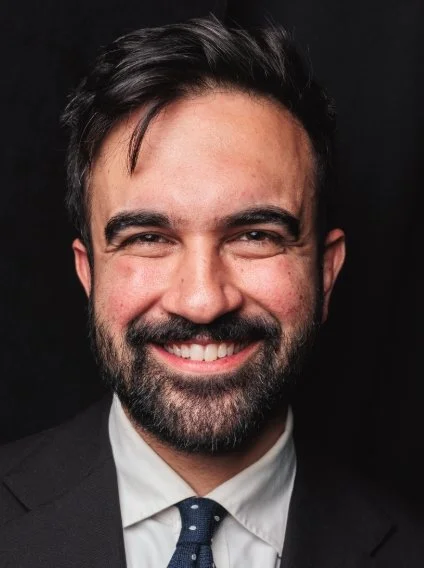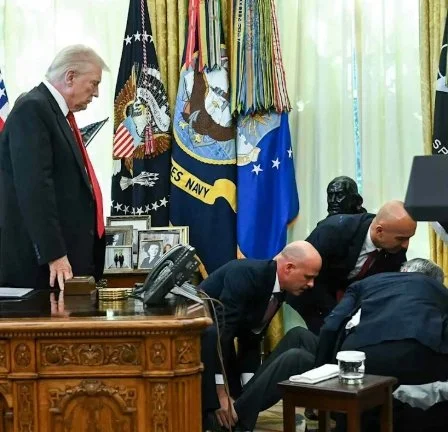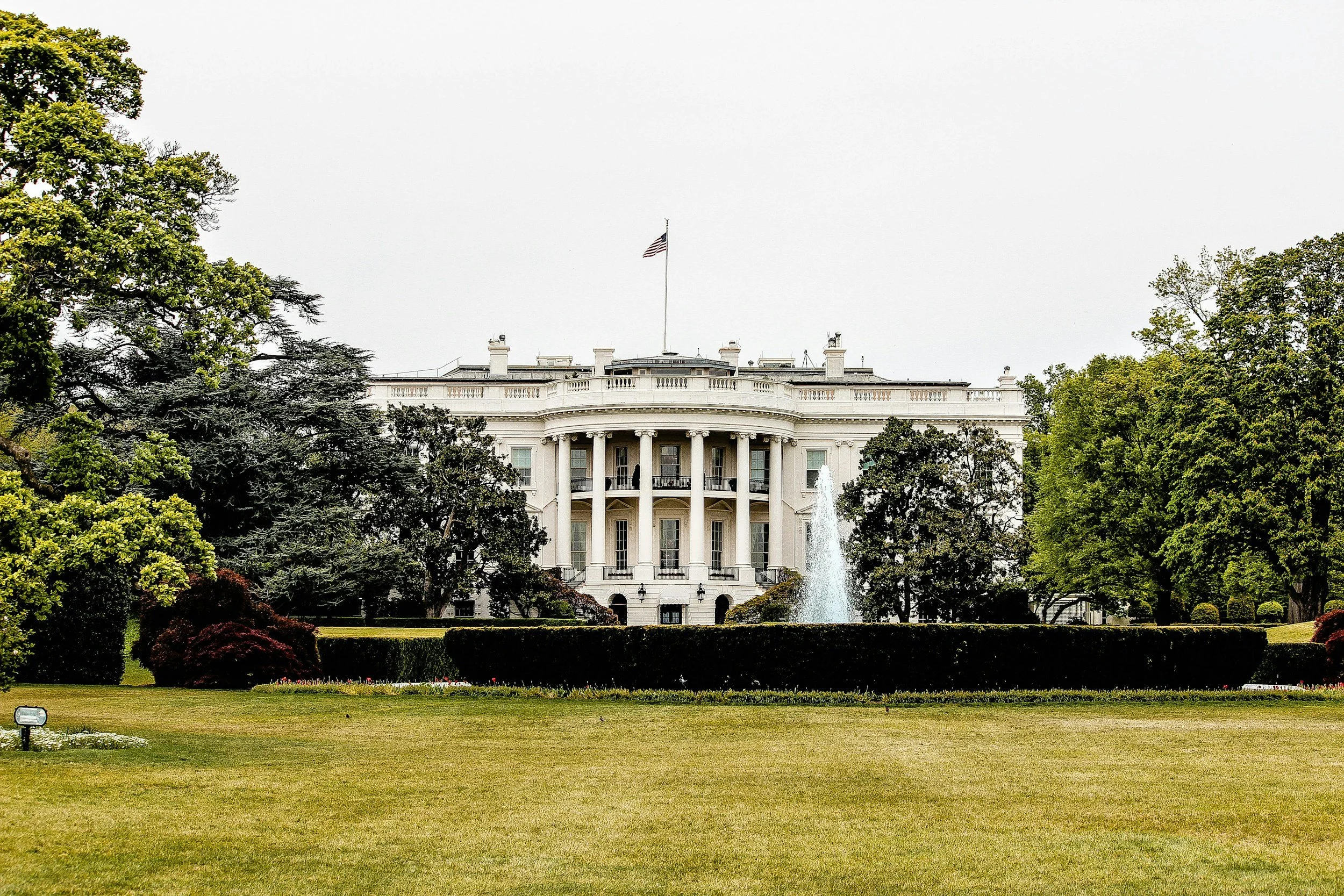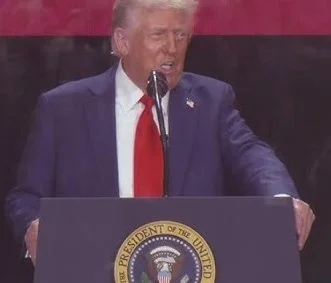Power, Persona, and Perception: Analyzing President Donald Trump's 100-Day Interview in His Second Term
In the realm of American politics, the first 100 days of a presidential term have long served as a symbolic benchmark, offering insight into the direction, tone, and priorities of a new or returning administration. For President Donald Trump, the 100-day mark of his second term was not just a checkpoint for policy achievements, but also a carefully curated opportunity to reassert his leadership style, ideological vision, and personal dominance on the national stage. In an interview with ABC’s Terry Moran, President Trump offered commentary on a wide range of issues including immigration, trade, inflation, international conflict, and the use of presidential power. However, beyond the surface of policy discussion, the interview revealed deeper patterns of rhetorical behavior, psychological disposition, and cognitive engagement that merit close examination.
This essay analyzes the Trump-Moran interview from three distinct but interrelated perspectives. First, it explores the president’s policy positions and how they are framed rhetorically to appeal to public fears, grievances, and nationalist sentiments. Second, it draws from political psychology to identify recurring behavioral traits such as grandiosity, distrust, and authoritarian leanings, which help shape both Trump’s leadership style and his public persona. Finally, it evaluates Trump’s cognitive function through the lens of clinical assessment frameworks, focusing on how his speech reflects attention, memory, executive reasoning, and emotional control.
By viewing the interview not only as a policy summary but also as a psychological and cognitive artifact, this analysis aims to better understand the enduring character of Trump’s political communication and its implications for governance in a polarized democracy.
TL;DR Key Points
Trump’s 100-Day Interview Marks a Strategic Display of Power and Persona
The interview is not just a policy update, but a deliberate performance of leadership, dominance, and grievance—framed through emotionally charged rhetoric and selective facts.Policy Positions Are Framed in Crisis Terms and Personal Triumph
Across immigration, trade, inflation, and foreign policy, Trump uses exaggerated claims and binary logic to present himself as the only effective leader capable of restoring order.Psychological Patterns Reveal Narcissism, Paranoia, and Authoritarian Leanings
The interview reflects consistent behavioral traits: grandiosity, distrust of institutions, need for admiration, and a tendency to wield power in a highly personalized and confrontational way.Communication Shows Intact Memory and Fluency, but Disorganized Reasoning
Trump demonstrates strong long-term recall and expressive speech, but frequently digresses, distorts facts, and resists abstract or complex arguments—indicating weaknesses in executive function.Leadership Style Centers on Loyalty, Control, and Identity Politics
Trump presents himself as both victim and victor, reinforcing a populist identity rooted in grievance, strength, and opposition to institutional checks and norms.The Interview Provides a Holistic View of Trump’s Political and Cognitive Worldview
Together, his policy framing, psychological patterns, and cognitive behaviors create a coherent—though polarizing—portrait of a leader whose governance is deeply shaped by personal narrative and confrontational style.
Disclaimer:
The analysis presented in this essay is not intended as a clinical diagnosis. Rather, it is an interpretation based on publicly observable behaviors, speech patterns, and decision-making styles as exhibited in President Donald Trump’s 100-day interview marking his second term. The essay draws on established psychological and political science frameworks to examine leadership traits, rhetorical tendencies, and cognitive indicators. As widely noted in professional mental health fields, diagnosing public figures from a distance is inherently limited and speculative. This work should be understood as an interpretive and analytical discussion, not a medical or psychological assessment.
Policy Positions: Key Themes and Their Rhetorical Framing
In the interview marking the 100-day milestone of his second term, President Trump presents a broad array of policy claims that span domestic governance, foreign affairs, economic management, and public health. However, these positions are not articulated through detailed policy analysis or technocratic language. Instead, they are consistently embedded in emotional appeals, stark dichotomies, and simplified narratives. Trump's rhetorical style is essential to understanding how he constructs political legitimacy. It relies heavily on crisis framing, repetition, personal attribution, and confrontation with perceived enemies—whether foreign adversaries, political opponents, or institutional actors. Each major policy area is communicated less as a matter of collective governance and more as a personal achievement or battle won.
1. Immigration and Border Control
One of the most prominent themes in the interview is immigration, where Trump claims that his administration has effectively closed the southern border. He attributes a 99.9 percent reduction in illegal crossings to his swift and uncompromising action. He further alleges that under President Biden, over 21 million illegal immigrants, including criminals and terrorists, entered the United States—figures that are highly disputed and not corroborated by independent data. Trump frames immigration as both a national security threat and a moral failing of his predecessor, casting himself as the restorer of order and safety.
His defense of mass deportations, particularly of Venezuelan migrants, reflects a recurring rhetorical pattern. He implies that deportees are overwhelmingly dangerous individuals, invoking imagery of gang members and criminals to justify bypassing due process. This is especially evident in his defense of deporting Kilmar Abrego Garcia, despite a Supreme Court order to halt the action. Trump dismisses legal concerns and reframes the issue as a question of national will, presenting himself as the only leader willing to defy bureaucracy in the name of public safety.
2. Trade and Tariffs
Trump also reiterates his longstanding trade agenda, emphasizing the use of high tariffs, especially against China. He claims that tariffs as high as 145 percent are necessary to correct decades of economic exploitation and trade imbalance. Despite the well-documented economic consequences of tariffs—including increased costs for importers and disrupted global supply chains—Trump denies that tariffs hurt consumers. Instead, he asserts that prices for goods such as gas, eggs, and groceries are falling, though these claims are selectively framed and not supported by consistent economic indicators.
When challenged on the negative impact of tariffs on small businesses and farmers, Trump responds by redirecting blame to prior administrations and globalist trade policies. He insists that the economy is rebounding under his leadership and that foreign investment is pouring back into the United States. This exchange highlights his frequent use of binary logic, positioning economic nationalism as inherently virtuous and opposition to it as betrayal or ignorance.
3. Economy and Inflation
On the issue of inflation, Trump claims that his return to office has reversed price increases caused by the Biden administration. He attributes rising prices entirely to his predecessor’s mismanagement and presents current economic conditions as dramatically improved. Once again, he uses anecdotal examples and selective data to support this narrative, asserting that grocery prices and fuel costs have declined since his inauguration.
Rather than acknowledging the complexity of inflation—such as global supply issues, interest rate policies, or energy market volatility—Trump simplifies the problem into a linear cause-and-effect narrative. According to his framing, Biden caused inflation and Trump fixed it. This rhetorical strategy reinforces his image as a results-oriented leader while avoiding the nuances of economic policymaking.
4. Foreign Policy and the Ukraine Conflict
Trump refers to the war in Ukraine as “Biden’s war,” arguing that the conflict would not have occurred under his leadership. He claims that both Russian President Vladimir Putin and Ukrainian President Volodymyr Zelenskyy respect him and that he is working behind the scenes to broker peace. Notably, he avoids providing a clear position on whether the United States should continue providing military aid to Ukraine. This ambiguity serves a strategic purpose, allowing him to appeal to both isolationist conservatives and national security hawks without committing to a policy stance.
His rhetoric on foreign policy is grounded in personal diplomacy and perceived strength. He contrasts his relationship with world leaders to Biden’s, arguing that global actors respect him more because of his unpredictability and decisiveness. This approach diminishes institutional diplomacy in favor of personal credibility and charisma, reinforcing a strongman narrative that resonates with segments of his political base.
5. Use of Presidential Power
Throughout the interview, Trump defends controversial uses of presidential authority. He denies using the office for revenge, yet proudly recounts actions such as revoking security clearances from former officials and supporting legal efforts against perceived adversaries. He frames these decisions not as retaliatory, but as necessary corrections to previous misconduct.
When asked about specific cases, such as legal settlements with powerful law firms, he explains their compliance as an acknowledgment of guilt rather than a strategic choice to avoid prolonged litigation. This suggests a worldview in which institutional checks and balances are less important than personal dominance and transactional outcomes. Power, in Trump's framing, is legitimate when exercised by him and suspect when held by others.
6. Additional Themes: Budget Cuts, Public Health, and International Standing
Trump also highlights budgetary achievements, citing the Department of Government Expenditures (DOGE) as having saved $150 billion by eliminating waste and fraud. Although there were no confirmed referrals to the Department of Justice at the time, Trump insists that misconduct was uncovered, relying on narrative assertion rather than official findings. This mirrors his broader communication strategy—replacing procedural legitimacy with declarative certainty.
On public health, Trump recommends childhood vaccinations but insists mandates should be left to the states. His support for Robert F. Kennedy Jr. as HHS Secretary complicates this stance, given Kennedy’s history of vaccine skepticism. Trump attempts to bridge this tension by pointing to Operation Warp Speed as one of the greatest successes of his first term. This selective endorsement allows him to appeal to both pro-vaccine moderates and vaccine-skeptical factions within his base.
Regarding international reputation, Trump dismisses concerns about a decline in tourism or foreign student enrollment. He claims the United States is now more respected globally, particularly in terms of military and economic power. These statements are based more on perception than data, but they serve to bolster the narrative that America, under his leadership, is feared, admired, and “great again.”
Psychological Profile and Behavioral Analysis
While policy content provides one layer of interpretation, President Trump's communication in the interview with Terry Moran reveals deeper psychological patterns that are integral to understanding his political identity. His rhetorical style, behavioral reactions, and narrative constructions consistently reflect a personality shaped by narcissistic traits, profound mistrust, and authoritarian leanings. These characteristics are not incidental—they form the foundation of how Trump frames reality, perceives threats, and exerts control. Drawing from established concepts in political psychology and clinical behavioral analysis, this section examines six interrelated psychological dimensions visible in the interview.
1. Narcissistic Grandiosity and Self-Promotion
Trump’s language is saturated with self-congratulatory superlatives. He describes his own achievements as “tremendous,” “unmatched,” and “historic,” frequently positioning himself as a singular force for change. He credits himself with ending wars, fixing the border, lowering prices, and restoring national pride. These claims are rarely tempered by humility or acknowledgment of collective effort. The narrative centers around his personal role as savior, echoing classic narcissistic patterns characterized by exaggerated self-importance and a need for constant affirmation.
Equally telling is his refusal to acknowledge error. When confronted with factual contradictions or controversial decisions, he either doubles down or pivots blame to others. Whether discussing inflation, immigration policies, or global conflicts, Trump consistently frames problems as inherited from previous administrations and solutions as exclusively his own. This defensive rigidity is a hallmark of narcissistic personality traits, in which ego preservation supersedes factual accuracy or collaborative reflection.
2. Deep Suspicion and Paranoia
Throughout the interview, Trump displays significant distrust toward institutions, individuals, and even the interviewer. His offhand comment to Moran—“I don’t trust you”—underscores a broader worldview in which betrayal and sabotage are expected norms. He often speaks of being persecuted, referring to the media, political opponents, and even the legal system as part of a coordinated effort to undermine him.
This suspicion extends into conspiratorial thinking. He repeatedly alleges that the 2020 election was “rigged” and that large groups of unnamed elites are manipulating public perception. Such claims are rarely supported with concrete evidence but are nonetheless presented with absolute certainty. These beliefs reflect a paranoid style of political communication, one that thrives on reinforcing in-group loyalty by constantly invoking the existence of hostile, hidden enemies.
3. Authoritarian Disposition and Power Personalization
Trump’s approach to presidential authority is explicitly personal. He frames executive power not as a constitutional responsibility but as a tool to be wielded according to will and loyalty. His justifications for controversial decisions—such as deporting individuals despite Supreme Court intervention or targeting former officials—are based less on legal reasoning than on moral absolutism and perceived necessity.
He repeatedly positions himself as the only leader strong enough to take decisive action, suggesting that institutions like Congress, the courts, or international coalitions are inefficient or compromised. This outlook embodies core authoritarian traits: centralization of power, disdain for procedural limits, and a reliance on personal loyalty over rule-based governance. His admiration for strongmen leaders abroad and disdain for multilateralism further solidify this profile.
4. Cognitive Distortion and Contradiction
Trump’s communication often reveals a flexible relationship with factual consistency. He makes numerous claims that are either demonstrably false or internally contradictory—for example, asserting that crime is down in Venezuela because all criminals have migrated to the United States, or referencing a person with “MS-13 tattooed on his knuckles” despite lack of visual or factual evidence. He rebuts data-driven challenges with anecdotal retorts or vague generalities such as “a lot of people are saying.”
This tendency reflects a style of reasoning that is emotionally driven rather than empirically grounded. When pressed, Trump often reverts to tautological reasoning: “We’re doing great because I say we’re doing great.” He frequently evades direct questions by reframing them as personal attacks, shifting attention from the subject matter to the integrity or bias of the questioner. These patterns suggest a distorted but internally coherent worldview where truth is fluid and aligned with narrative control rather than objective verification.
5. Low Frustration Tolerance and Aggressive Reactivity
Trump’s interpersonal behavior during the interview is marked by low emotional restraint. He frequently interrupts, dismisses the interviewer, and uses insult as a defense mechanism. Comments such as “you’re fake news” and “I never heard of you” reflect a tendency to lash out when challenged. This is consistent with a reactive temperament that favors dominance over dialogue.
Victimhood and aggression appear in tandem. Trump casts himself as both unfairly persecuted and triumphantly defiant. This dual framing—of being the most persecuted yet most successful president—allows him to maintain a sense of grievance while still projecting strength. Psychologically, this serves to galvanize supporters by reinforcing the notion that Trump is both under siege and uniquely capable of resistance.
6. Pragmatic Opportunism and Ideological Flexibility
Trump’s responses reveal a highly adaptive, transactional mindset. His stance on issues like vaccination, trade, or international alliances shifts based on strategic utility rather than ideological consistency. For example, he promotes vaccines when discussing public health success but also appoints a vaccine skeptic as health secretary, thus appealing to both pro-science and anti-mandate audiences.
This opportunism reflects a utilitarian moral compass. Actions are justified not through appeals to principle but through outcomes or power dynamics. He often claims that adversaries settled legal matters with him “because they probably did something wrong,” presenting legal negotiation as proof of guilt rather than ambiguity. This approach mirrors the logic of deal-making, where truth and ethics are subordinate to leverage and advantage.
Cognitive Function: Observational Assessment
While President Trump’s communication style often provokes political debate, it also provides valuable insights into his cognitive functioning. By examining his verbal patterns, reasoning strategies, and interpersonal behaviors during the 100-day interview, we can draw meaningful observations about his mental faculties. Though this is not a clinical evaluation, applying the logic of screening tools like the Mini-Mental State Examination (MMSE) and Montreal Cognitive Assessment (MoCA) offers a useful framework for understanding his cognitive strengths and weaknesses in a high-pressure, unscripted setting.
The transcript reveals that Trump possesses intact basic faculties such as verbal fluency and memory recall, but demonstrates noticeable deficits in executive reasoning, sustained attention, and abstract thinking. These patterns align more with long-standing behavioral traits than with signs of clinical decline, but they do reflect potential vulnerabilities in leadership communication and decision-making under cognitive stress.
1. Verbal Fluency and Articulation
Trump speaks in a rapid, uninterrupted style that suggests intact expressive language ability. He shows no signs of word-finding difficulty or hesitation that might point to neurological speech disorders. However, his fluency is highly repetitive, filled with stock phrases such as “people are saying,” “nobody’s ever seen,” and “tremendous success.” These catchphrases serve both rhetorical and cognitive purposes, helping to reinforce central themes while masking a lack of structured argumentation.
Although his speech is grammatically coherent, it often lacks logical progression. He jumps between topics without clear transitions and interrupts his own train of thought to insert anecdotes or personal boasts. This disorganization may not indicate clinical impairment but does suggest impulsive communication habits and a preference for rhetorical momentum over clarity.
2. Logical and Coherent Thought Process
A hallmark of Trump’s communication in the interview is its reliance on anecdotal logic and emotional reasoning. He often substitutes personal stories or speculative assertions for empirical evidence. For example, he attributes reduced crime in Venezuela to criminals having migrated to the United States, without citing credible sources. This pattern reflects a cognitive style that favors intuitive judgments over analytical reasoning.
His thought process tends to derail under scrutiny. When Moran poses multi-part or fact-based questions, Trump frequently redirects the conversation, reframes the question as an attack, or offers a non-sequitur. He rarely constructs arguments with clearly defined premises and conclusions, and when challenged, he often reasserts his original position without modification, creating a circular or tautological logic loop.
3. Memory and Consistency
Trump displays competent long-term memory. He recalls specific numbers, historical events from his previous term, and past decisions in enough detail to suggest that his factual recall remains intact. However, these memories are often deployed selectively and sometimes altered to fit his desired narrative. For instance, he refers to “winning all seven swing states” and “winning the popular vote,” both of which are verifiably false. This may reflect deliberate distortion for rhetorical purposes rather than memory dysfunction, but it introduces a blurring of factual consistency.
There is also some conflation of timelines and exaggeration of past achievements, which can make it difficult to assess the accuracy of his recall. While these tendencies may be strategic, they do suggest a flexible and often distorted memory narrative that serves more to reinforce identity and authority than to deliver objective information.
4. Executive Function and Judgment
Executive function encompasses skills like planning, organizing, abstract reasoning, and the ability to shift strategies when presented with new information. In the interview, Trump exhibits signs of impaired executive function, especially in his inability to stay on topic, respond directly to complex questions, or synthesize competing viewpoints. When asked about controversial legal actions, for instance, he reframes the issue into a moral dichotomy—right versus wrong, strong versus weak—rather than addressing the legality or process.
His reasoning often follows black-and-white thinking. He categorizes people as “criminals” or “great patriots,” institutions as either corrupt or honorable, and outcomes as either total success or complete failure. This lack of nuance points to difficulties in integrating conflicting perspectives or handling ambiguity—an essential component of executive reasoning in leadership.
5. Attention and Impulse Control
Trump’s attention appears highly reactive and externally driven. He frequently digresses mid-sentence, interrupts the interviewer, and appears to lose focus when confronted with data or policy-specific language. His responses often drift into tangents, suggesting a low capacity for sustained attention and structured dialogue. These patterns are amplified when he perceives criticism or challenge, prompting defensive outbursts and rhetorical attacks.
Impulse control is another area of concern. Rather than pausing to reflect or seek clarification, Trump often meets opposition with hostility. His tendency to question the legitimacy of the interviewer or to declare "fake news" reflects an instinctive rather than deliberative reaction. While not inherently pathological, this pattern reveals a low frustration tolerance that can compromise decision-making and public discourse.
6. Abstraction and Conceptual Thinking
Trump’s language tends to be concrete and literal, with limited use of abstract concepts or metaphorical reasoning. He relies heavily on binaries—such as success versus failure, loyalty versus betrayal, America versus the world—to explain complex issues. When discussing the Ukraine war, for example, he avoids addressing geopolitical strategy or alliance dynamics, instead focusing on whether foreign leaders “respect” him.
This aversion to abstraction can simplify messaging for political effect, but it also limits the depth of strategic communication. It suggests either a deliberate populist rhetorical style or a genuine limitation in conceptual flexibility.
Summary of Observations
| Cognitive Domain | Observed Functioning |
|---|---|
| Verbal Fluency | Intact, though repetitive and disorganized |
| Logical Coherence | Weak, often circular or anecdotal |
| Memory | Long-term recall intact, but selectively distorted |
| Executive Function | Impaired – black-and-white thinking, poor topic adherence |
| Attention | Poor – frequent digressions, deflection under pressure |
| Impulse Control | Low – reactive and combative |
| Abstraction | Limited – concrete, literal reasoning |
Taken together, these observations suggest that Donald Trump retains essential cognitive capacities such as memory and verbal fluency. However, his executive functioning, attention, and abstraction appear compromised, whether due to age-related decline, personality traits, or long-established communicative habits. While there is no evidence of clinical dementia or acute cognitive dysfunction, these patterns raise legitimate concerns about the quality of high-level decision-making, especially under stress or scrutiny.
Simply Put
The 100-day interview between President Donald Trump and journalist Terry Moran serves not only as a window into the policy agenda of Trump’s second term, but also as a revealing document of his enduring political persona. Across a wide range of topics—immigration, trade, foreign policy, public health, and executive authority—Trump advances a narrative rooted in personal accomplishment, confrontation with adversaries, and a vision of America as embattled but on the verge of triumph under his command. His rhetorical strategies rely less on factual precision and more on emotional resonance, repetition, and crisis framing.
Beneath the surface-level policy claims lies a more consistent psychological and cognitive framework. Trump’s communication is marked by narcissistic self-promotion, deep suspicion of institutions and individuals, and a personalized view of power that prioritizes loyalty over legality. He consistently blurs the line between political messaging and psychological projection, framing opposition not as legitimate dissent but as betrayal or sabotage. This authoritarian disposition, fused with populist rhetoric, helps explain both his polarizing effect and his persistent appeal to a core segment of the American electorate.
Cognitively, Trump demonstrates intact basic faculties such as long-term memory and verbal fluency, but shows repeated signs of disorganized reasoning, impulsivity, and limited capacity for abstraction. While these patterns do not point to clinical impairment, they are consistent with mild executive dysfunction and reflect longstanding behavioral tendencies rather than acute cognitive decline. His frequent digressions, black-and-white thinking, and resistance to nuanced argumentation suggest a style of leadership that prioritizes dominance and simplicity over deliberation and complexity.
Taken together, the content and structure of Trump’s 100-day interview reinforce a political identity rooted in charisma, grievance, and control. His policy positions, psychological traits, and cognitive behaviors are not separate spheres, but tightly interwoven elements of a populist strategy that challenges traditional democratic norms. As Trump continues to shape the national conversation in his second term, understanding the integration of personality, power, and perception is not just important, it is essential to recognizing the risks this leadership style may pose to institutional norms, democratic resilience, and public trust in truth itself.
Sources
FULL TRANSCRIPT: Trump's exclusive 100 days broadcast interview with ABC News - ABC News
References
Altemeyer, B. (2006). The Authoritarians. University of Manitoba.
Bligh, M. C., Kohles, J. C., & Meindl, J. R. (2004). Charisma under crisis: Presidential leadership, rhetoric, and media responses before and after the September 11th terrorist attacks. The Leadership Quarterly, 15(2), 211–239. https://doi.org/10.1016/j.leaqua.2004.02.005
Caprara, G. V., & Zimbardo, P. G. (2004). Personalizing politics: A congruence model of political preference. American Psychologist, 59(7), 581–594. https://doi.org/10.1037/0003-066X.59.7.581


















